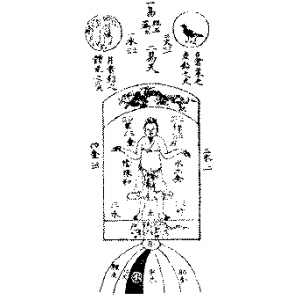

In the above lines, the poet tells his darling that she has no reason to deny him sexually, as the flea has sucked blood from both of them, and their blood has mingled in its gut, so the flea has become their “marriage bed,” though they are not married yet.

Our marriage-bed and marriage-temple is…” Example 2: A Valediction: Forbidding Mourning (By John Donne) The term conceit usually brings to mind certain examples from metaphysical poets of the 17th century. Where we almost, yea more than married are.
MICROCOSM LITERARY TERM SERIES
Series 5: Library and information sources in linguistics Issue 2 of Columbia Studies In The Classical Tradition Volume 2 of Philosophia Antiqua: Author: James A. We find another striking example of conceit in John Donne’s poem, The Flea: The Literary Microcosm: Theories of Interpretation of the Later Neoplatonists Volume 2 of Amsterdam studies in the theory and history of linguistic science. He says the bodies of lovers may be separate like the two legs of a compass, but are always joined at the top that reminds us of the spiritual union of the two lovers. He compares her soul to the fixed foot, and his to the other foot. He compares his and his beloved’s souls with the two legs of a drafting compass. This is one of Donne’s most ingenious conceits. “If they be two, they are two so As stiff In both of Shakespeare's plays the element of subplot is introduced (microcosm) as part of the whole (macrocosm). John Donne, in his poem A Valediction: Forbidding Mourning, says: A 'microcosm' is an individual or community considered as a seperate universe 'macrocosm' is the entire great world as a whole. Even when the critic is sympathetic, this dual categorization tends to stigmatize Carver as a minor artist writing little stories about little people. Of these, John Donne stands out as the best exponent of the use of metaphysical conceits. Nearly everything written about Raymond Carver ( August 2, 1988) begins with two observations: He is a minimalist, and he writes about working-class people. The term conceit usually brings to mind certain examples from metaphysical poets of the 17th century. Example #2: A Valediction: Forbidding Mourning (By John Donne) The comparison is an extended metaphor in which he compares her eyes to a sea, her tears to a storm, her sighs to the stormy winds, and her body to a boat in a storm. Who, raging with thy tears, and they with them, Sailing in this salt flood the winds, thy sighs “Thou counterfeit’st a bark, a sea, a wind įor still thy eyes, which I may call the sea,ĭo ebb and flow with tears the bark thy body is, Here, Capulet comes to Juliet’s room after Romeo has left. William Shakespeare makes use of a conceit in Act 3, Scene 5 of his play Romeo and Juliet.


 0 kommentar(er)
0 kommentar(er)
